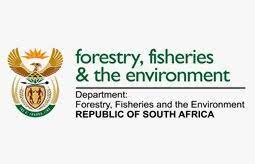
Download the logo
The Department of Forestry, Fisheries and the Environment (DFF&E) has activated the West Coast Rock Lobster Contingency plan and issued a Situation Red Alert, which places all government players in the sector on alert.
This is due to the Red Tide harmful algal bloom (Red Tide), that has been developing on the West Coast, Western Cape. As of 1 March 2022, an estimated 500 tons West Coast Rock Lobster have walked out.
The department is the lead in the contingency plan. It is supported by the West Coast District Municipality. Cederberg Municipality. South African Police Services, South African National Defence Force and the Western Cape Province.
Local municipalities and law enforcement will work together with Department officials to rescue live lobsters and assist with clean-up operations. The Department will also collaborate with local communities to help clean up beaches and recover live lobsters from the west coast that were washed up by red tide. All live lobsters that have been rescued will be rehabilitated, and will be safely returned back to the sea after the red tide threat has subsided.
As is the case often in summer and late-summer, there has been a buildup of large red waves in the greater St. Helena Bay area over the past few days. These phytoplankton blooms are currently dominating the waters around Elands Bay and Lamberts Bay.
These blooms are dominated a group of phytoplankton called dinoflagellates. Their inshore accumulation, particularly during periods of calm, often leads to their decay and subsequent development of low oxygen conditions that cause marine mortalities. This was evident at Elands Bay’s beaches earlier today. Further mortalities are possible due to light westerly winds predicted for the next few day. These dinoflagellates can also produce toxic substances that can accumulate in shellfish, which could pose a danger to human health. Members of the public are advised not to eat any shellfish or fish that have been contaminated by the red tide. This could pose a serious risk to their health.
Distributed by APO Group for Republic Of South Africa: Department of Forestry, Fisheries and the Environment
APO has issued this Press Release. APO has issued this Press Release. The content has not been reviewed by African Business’ editorial team. The content of this announcement is solely at the issuer’s responsibility.

